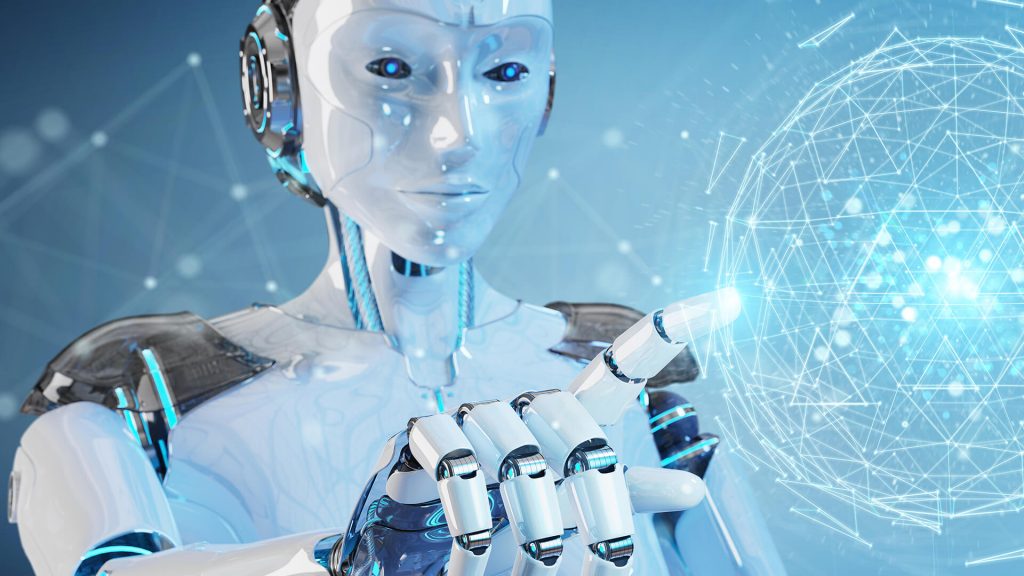Course Title: Robotics & Artificial Intelligence
Class: X
Board: ICSE
Overview:
This course on Robotics & Artificial Intelligence is designed in alignment with the New Education Policy (NEP) and aims to provide students with a comprehensive understanding of both theoretical concepts and practical applications in the fields of robotics and AI. The course covers the latest advancements in robotic systems, machine learning, and programming, ensuring that students are well-prepared for the evolving technological landscape.
The course includes hands-on practicals, allowing students to build and integrate robots, explore decision-making algorithms, and work with AI frameworks. Video tutorials are provided at the end of every lesson for additional support, along with worksheets, sample papers, and question banks—completely free of cost.
Course Outline:
1. New Age Robotic Systems
Students are introduced to modern robotic systems, focusing on how robots are transforming industries, healthcare, and everyday life. This module covers the evolution from simple machines to advanced robots capable of performing complex tasks autonomously.
Key Topics:
- Definition and evolution of robotic systems
- Autonomous and semi-autonomous robots
- Applications in various sectors (e.g., manufacturing, service industries, healthcare)
2. From Robots to Cobots
This section explores collaborative robots (Cobots) that work alongside humans, enhancing productivity while ensuring safety. The focus is on the interaction between humans and machines, enabling students to understand the synergy between manual labor and automation.
Key Topics:
- Differences between robots and cobots
- Human-robot interaction (HRI)
- Safety measures in Cobot applications
- Real-world examples of Cobots in industries
3. Components of Robots as a System
Students delve into the building blocks of a robot, understanding the mechanical, electronic, and computational aspects that enable robots to function. The aim is to provide a foundational understanding of how various components integrate to create a working robot.
Key Topics:
- Mechanical structures and actuators
- Sensors and controllers
- Power sources
- Communication systems
4. Visualization, Design, and Creation of Components
In this module, students learn to visualize and design robotic components using CAD (Computer-Aided Design) software. They will also explore 3D printing and other methods for creating physical parts of robots.
Key Topics:
- CAD modeling for robotic components
- 3D printing for prototyping
- Testing and refining component designs
5. Integrating Robots as a System
Here, students learn how to combine individual robotic components into a fully functional system. They will engage in practical activities that involve assembling robots, connecting sensors and actuators, and programming basic movements.
Key Topics:
- System integration techniques
- Communication between components
- Debugging and troubleshooting robot systems
6. Decision Making in Machines/Computers
This module focuses on how robots and machines make decisions based on input data. It introduces basic concepts in algorithms and decision trees, providing students with a clear understanding of how machines mimic human decision-making processes.
Key Topics:
- Decision-making algorithms
- Neural networks and machine learning basics
- Applications in autonomous systems
7. Machine Intelligence and Cybersecurity in Computing
As AI becomes more integrated into our lives, ensuring the security of intelligent machines is critical. This module covers the role of cybersecurity in robotics and AI, with discussions on ethical issues and the prevention of cyber threats.
Key Topics:
- Basics of machine intelligence
- Ethical considerations in AI and robotics
- Cybersecurity challenges and strategies
8. Components of AI Project Framework
Students learn the structure and components required to build a successful AI project. This module focuses on planning, data collection, model development, testing, and deployment in real-world applications.
Key Topics:
- AI project lifecycle
- Data preprocessing and model training
- Performance evaluation and improvement
- Real-world AI project examples
9. Introduction to Data and Programming with Python
Python is introduced as a versatile language for both general programming and AI applications. Students will learn the basics of Python programming, with an emphasis on data handling and machine learning libraries like NumPy and TensorFlow.
Key Topics:
- Python basics: variables, loops, and functions
- Data handling with Pandas and NumPy
- Introduction to AI programming with TensorFlow and scikit-learn
Additional Resources:
- Video Tutorials: Each lesson includes video tutorials to aid understanding and provide visual demonstrations of concepts and practicals.
- Worksheets and Assignments: For every topic, students will have access to worksheets designed to reinforce learning through practice.
- Sample Papers and Question Banks: Students can prepare for exams using sample papers and a question bank that covers important topics from the course.
All resources, including video tutorials, worksheets, and question banks, are provided free of cost to ensure students have everything they need to succeed in the field of Robotics and Artificial Intelligence.

